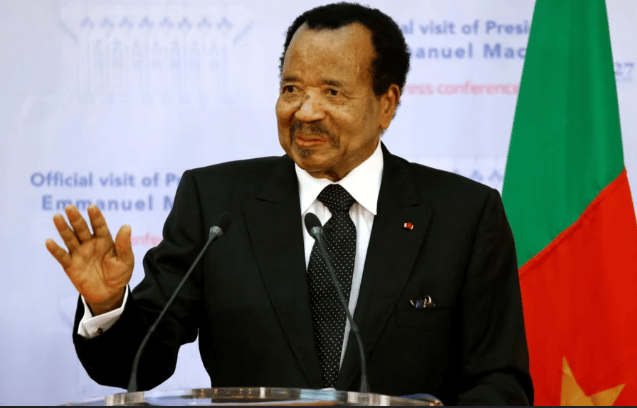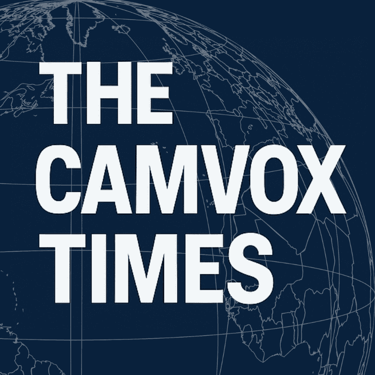Why Paul Biya “Legally” Wins Elections Despite Social Media Hype
Beyond the city noise lies the rural silence where Cameroon’s real elections — and legal victories — are decided.
Dr. Julius Babila Taka, Director of Publication, The CamVox Times
10/14/2025


The urban noise creates the illusion of change, while the rural silence determines the outcome. In every election year, Cameroonians flood social media with images, videos, and posts suggesting that opposition candidates are on the brink of victory. In polling stations across Yaoundé, Douala, and Bafoussam, crowds sing victory songs while live feeds declare “change is coming.” For a fleeting moment, the nation believes the winds of transformation are sweeping through. Yet behind the spectacle lies a sobering truth: the secret of President Paul Biya’s consistent legal victories extends far beyond those viral moments and city lights.
What circulates online is merely a narrow urban reflection of a vast national picture. Opposition activists and digital influencers naturally center their attention on cities—where access, internet coverage, and visibility are highest. Cameras roll, voices rise, and every neighborhood seems engaged. But the Republic of Cameroon’s electoral destiny is not decided in Douala, Yaoundé, Bamenda, or Buea. It is written in the hinterlands—those untelevised rural plains and mountain villages where the ruling CPDM’s machinery operates with precision. That is where the real campaign work happens: in places unseen, unheard, and unrecorded.
Every credible election turns not on emotion or noise but on documentation—the procès-verbaux (PVs), official tally sheets signed at each polling station and transmitted to ELECAM. While the cities may produce opposition-leaning PVs, their numbers pale in comparison to the avalanche of rural tallies that often tilt the scale. In these remote zones, local administrative officers and ELECAM agents—many long loyal to the regime—ensure procedural control and political continuity. Opposition parties, lacking observers and logistics to monitor these regions, find themselves armed only with urban PVs. When the Constitutional Council convenes, the CPDM presents results “from everywhere else.” Legally, those are the results that count.
This is no abstract theory—it unfolded vividly in 2018. Maurice Kamto’s MRC showcased impressive PVs from urban centers, some showing strong leads. Yet, these victories were statistical islands in a sea of rural dominance. When Kamto took his case before the Constitutional Council, the CPDM countered with its rural PVs—the ones that mattered legally. Kamto’s now-famous remark, “Vous avez la compétence de votre compétence,” captured the futility of challenging an entrenched electoral system without a national presence. Without verified PVs from rural polling stations, no opposition leader can credibly contest the final results.
Fast-forward to 2025. Issa Tchiroma Bakary now casts himself as a major opposition contender. Yet, few understand the mechanics of Cameroon’s electoral system better than he does. As a former insider within the Biya administration, Tchiroma knows exactly how the CPDM sustains its grip—through structural reach, rural control, and procedural legitimacy. Unlike traditional opposition figures who build grassroots observer networks, Tchiroma entered the race late, lacking the infrastructure or territorial depth needed to counter a four-decade-old system. So while social media will again erupt with jubilant urban videos of his supporters, the countryside will remain firmly under the ruling party’s quiet command.
The pattern is clear. The opposition wins visibility; the CPDM wins geography. In Cameroon’s elections, legitimacy flows not from popularity but from paperwork. The ruling party’s enduring advantage lies in organization: a loyal structure embedded in every village, a presence in every polling station, and influence over every local ELECAM office. When results are announced, it is not tweets or live streams that shape the presidency—it is signed sheets of paper from places without Wi-Fi.
This is the anatomy of Paul Biya’s “legal” victories. They are less about mass appeal than about administrative omnipresence—legality as architecture, not accident. The urban noise may continue to echo with hope, but the rural silence will keep deciding the outcome. Until opposition movements extend their vigilance beyond Facebook, beyond Douala, and beyond Yaoundé, the story will not change. Paul Biya will continue to win legally—and the social media generation will continue to be surprised by results that were predictable all along.
